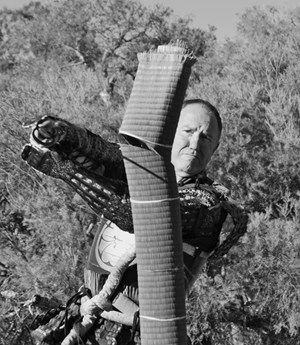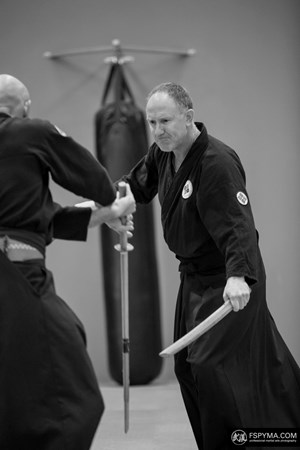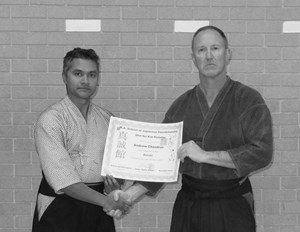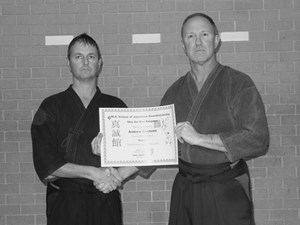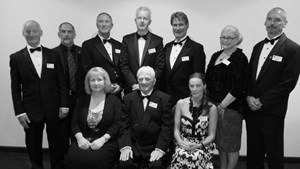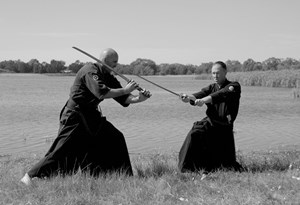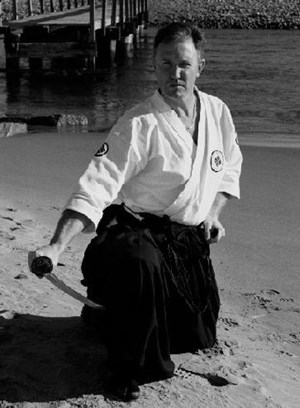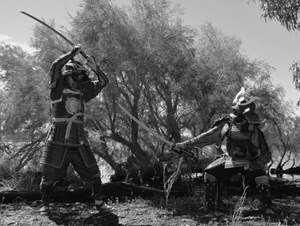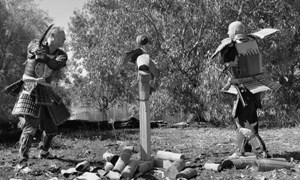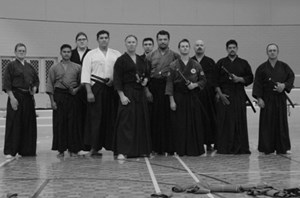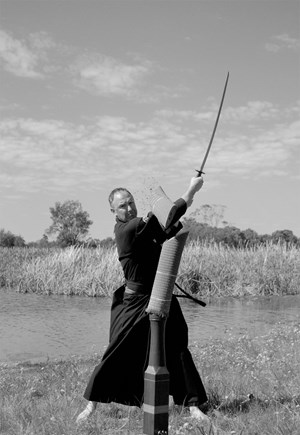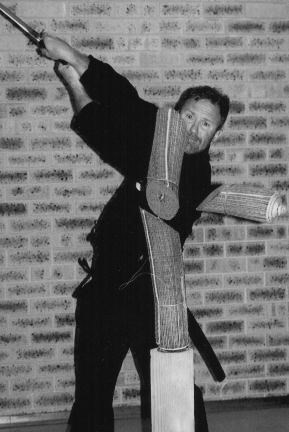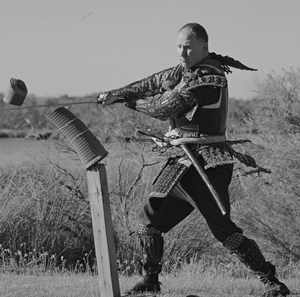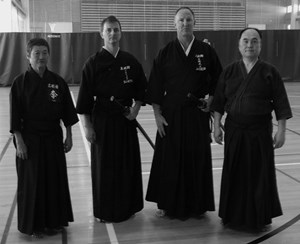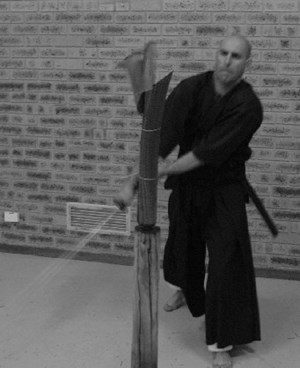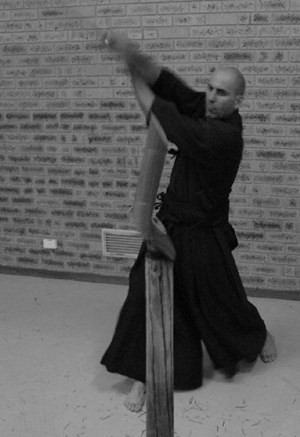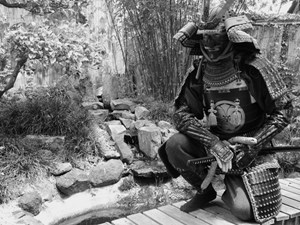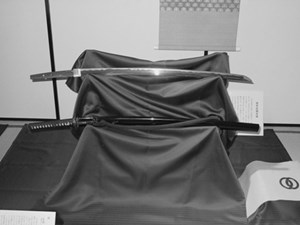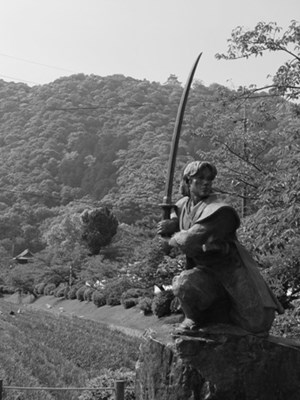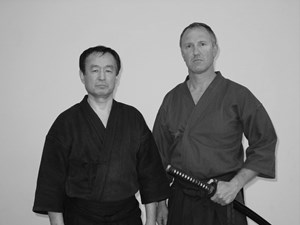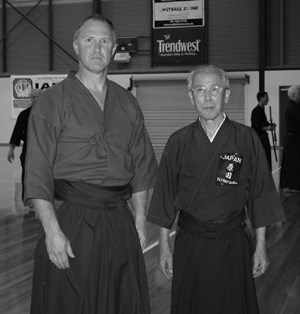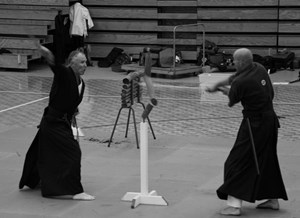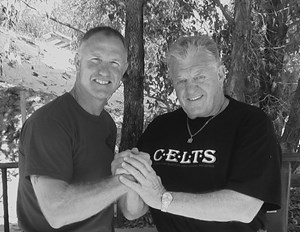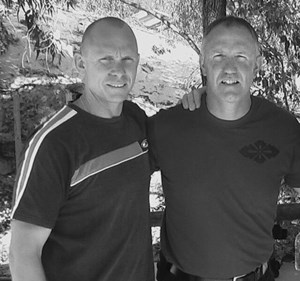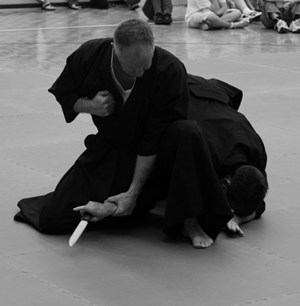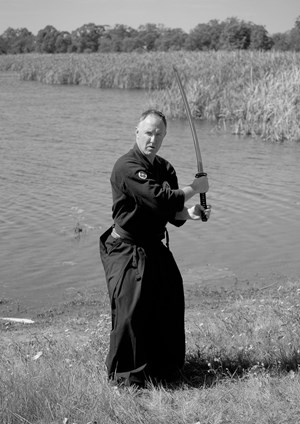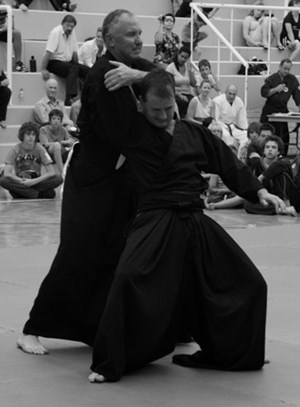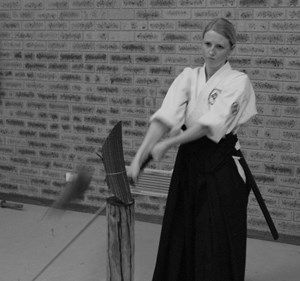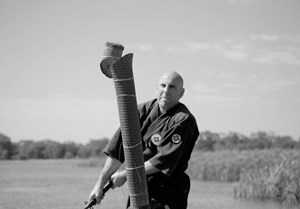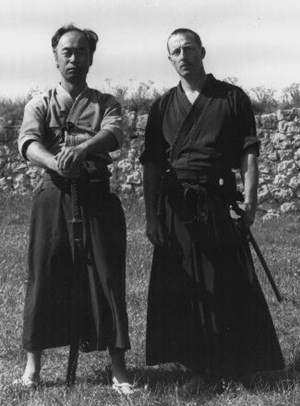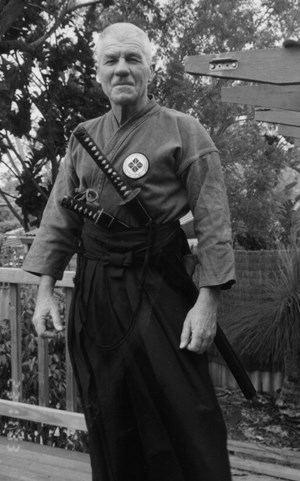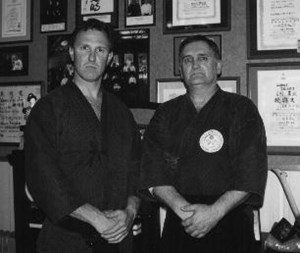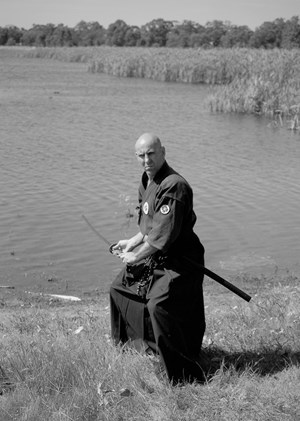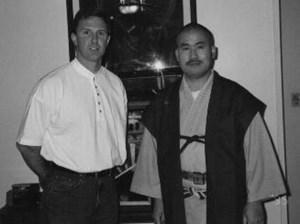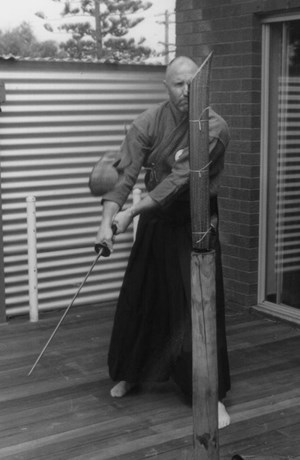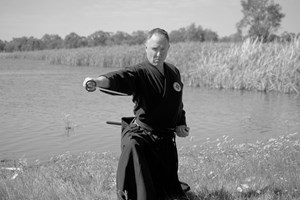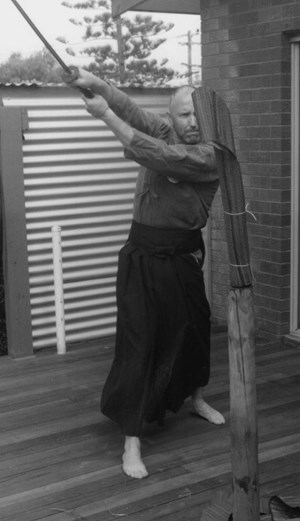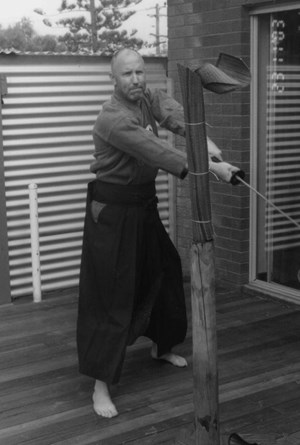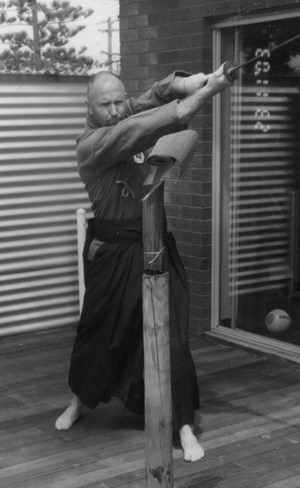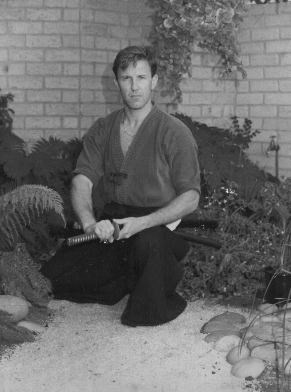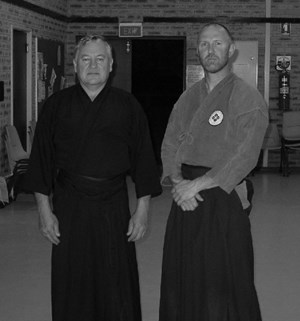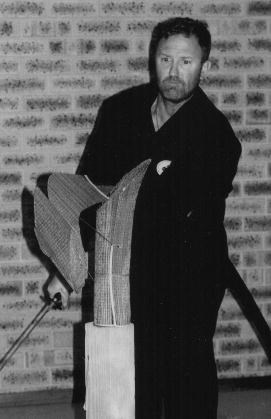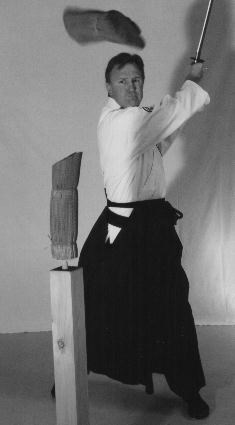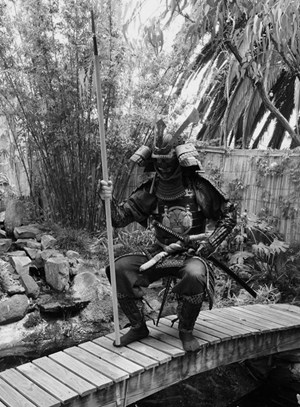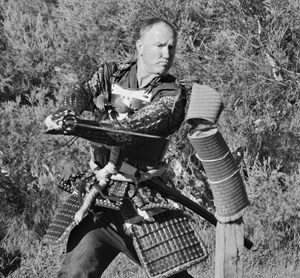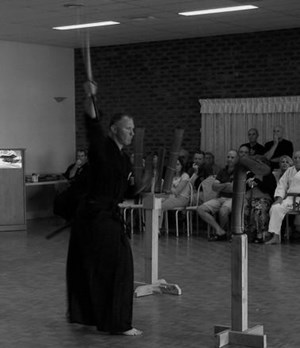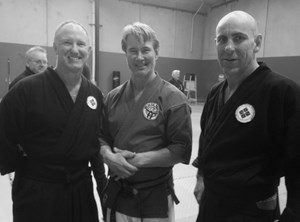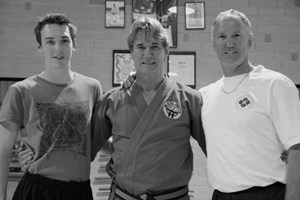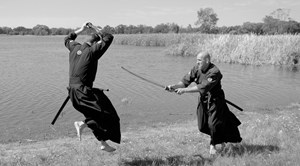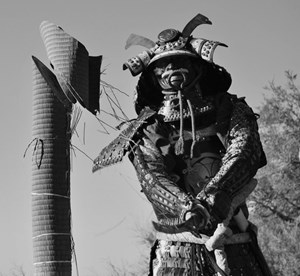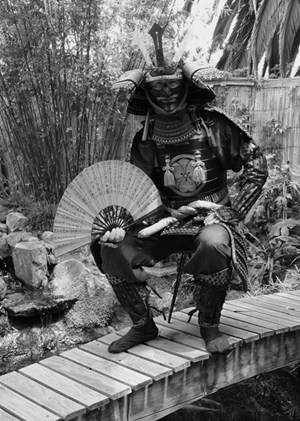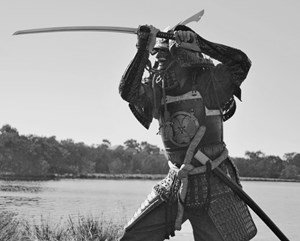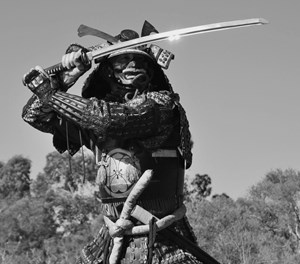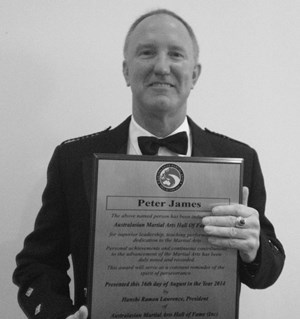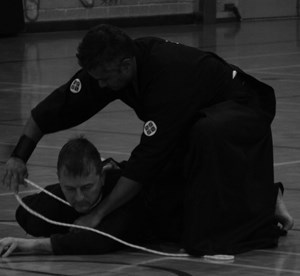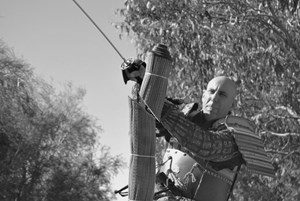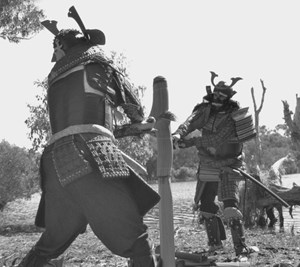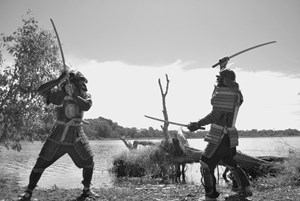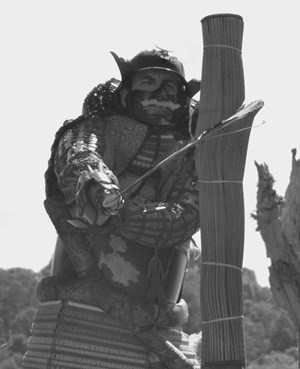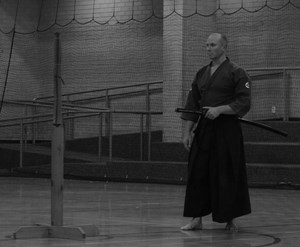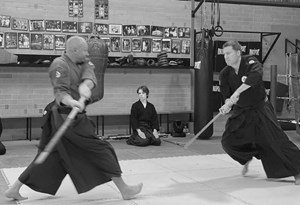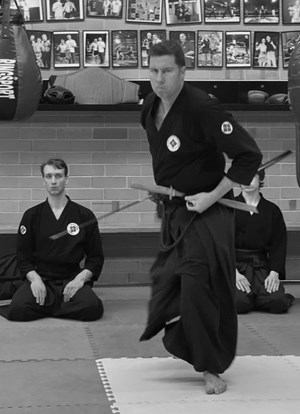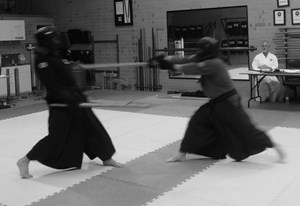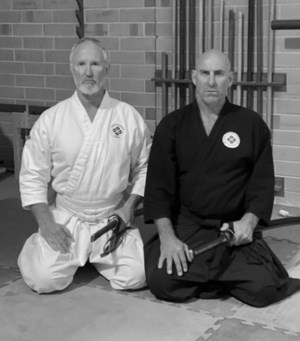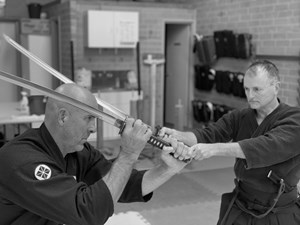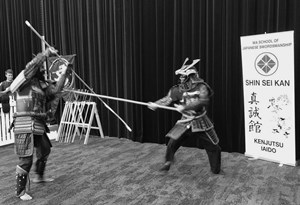About Kenjutsu
Essentially kenjutsu is the method of fighting employed in using the single edged Japanese sword, as the Samurai would have used during the years of endless civil wars prior to 1600. It is different from Iaido (the way of drawing the sword developed post 1600) and Kendo (the Japanese sport of fencing).
As with any sword fighting culture, various schools use different training methods, tactics and techniques to train it's students to fight and win against other swordsmen, our school is no different. The WA School of Japanese Swordsmanship uses preset patterns (Kata), skill development training for distance, timing and speed, one step sparring to teach the techniques of the school, test cutting and sparring all designed to develop students into swordsmen and women.
As well as the physical training syllabus, there is also the mental training that goes hand in hand with picking up a lethal weapon like the Japanese sword. The WA School of Japanese Sworsmanship Ryu teaches the use of the Katana, wakisashi, tanto, Bo and shiriken, the weapons of choice for the Samurai.
Shin Sei Kan
The Kan is a style of fighting, it is also the means by which
the style is preserved for future generations. The Kan embodies all
the knowledge to be taught and also the manner by which it is
passed on to students. It is essential that you strive to
understand exactly what the Kan is, means and embodies as you
progress through your training. It is also important that you pass
on the teachings in the same spirit that you received them.
The essence of this Kan is the development and maintenance of an
attitude of calmness, detachment and determination in the Dojo and
in everyday life. The practice of Kenjutsu will develop self
discipline in mind, body and manner, moulding the practitioner into
a martial artist.
The Dojo
The word Dojo means "way place" and is a place where the student
will attempt to realise the art. It is not a school room, but has
certain aspects in common. It is a special place of great serenity
and great violence. It should exude discipline and be spotlessly
maintained. It is not a place to learn to kill, but a place to
learn how to die.
Within the Dojo, manners and etiquette are expected and demanded.
The instructor within the Dojo should always be refereed to as
Sensei, Sensei means "born earlier" and implies that the teacher
has already reached the place the students are striving for.
Regardless of the personal relationship you enjoy with your Sensei
outside of the Dojo, inside the Dojo he is always your Sensei and
nothing else.
The Senior student of the Dojo is called Sempai and may be
appointed Renshi (trainer) in Sensei's absence. The Sempai is to be
obeyed and given the respect due his position.
Dojo Etiquette
As a guide, the following should be obeyed at all times within
the Dojo.
- The Dojo is a place to be respected, please bow when entering the training area and before leaving.
- The Dojo is a place of physical and spiritual training, no socialising, including "chit chat".
- When addressing Sensei or Sempai always excuse yourself before speaking.
- When Sensei or Sempai have finished speaking to you, bow and thank them.
- When wishing to leave the class, wait for permission from the instructor.
- Money is never discussed in the Dojo (fees are due at the beginning of the Month, no fees no training. The schools sees payment of fees on time as a sign of dedication while the student takes his place in the school.
- Ceremony is initiated by the Sensei or Sempai (i.e. Bowing at the end of class).
- Always remember your place in the Dojo.
- When adjusting your uniform, please turn away from the Shrine and others, no one wants to see you get dresses.
- Remember sword etiquette, never touch or step over another sword. Never touch anything that belongs to someone else, including books, ask permission first, this is common courtesy.
- Always try to arrive on time and phone if you cannot attend training.
Regardless of the Sensei's actions, the above rules are to be
obeyed., It is for the benefit of the students not the Sensei that
these rules be followed.
Discipline and respect are earned with hard work, a great deal of
discipline is required in the study of swordsmanship.
The Sword
Kenjutsu is the art of employing the Katana in combat against
another swordsman. The other edged weapons in the samurai arsenal
including Tanto, Wakisashi, Bo and Shuriken. Students should
familiarise themselves with the parts and names of these
weapons.
In training, the Bokuto, Shinai, and Shinken is used. All are
accorded the same respect. The sword is considered the soul of the
Samurai and should not be mishandled or left laying about. As a
student of Kenjutsu, your handling of blades inside and outside the
Dojo are a reflection on the school, your training, and your
attitude. Learn how to handle live blades correctly before
attempting to view them in any circumstances, inside or outside the
Dojo.
Part of the training in Kenjutsu includes selection and handling
of weapons. Equipment is available from the school at a discounted
price, please see your instructor for details.
The School Mon
The Mon is the symbol of the school and was designed in early 1999. The Diamonds of the Mon (Five in total) represents;
The Five states (Earth, Air, Water, Fire, and the Void) Strength, attitude, directness, sharpness, knowledge. The eight angles, or lines of the sword Symmetrical shape of East meets West, Ying and Yang etc.
The Japanese Sword (the diamond edge) The Diamond always
retains its brilliance, and is very hard and strong. It is said the
presence of the diamond makes people stronger and more courageous;
this is the way of the school.
Training - Earth
The grounding for the art.
The basic of the martial arts, training the body to accept the
techniques; physical fitness, agility, flexibility, speed. This
puts the student in good stead for all life activities.
Spirit - Fire
Fire in the belly.
The natural by-product of physical training is mental toughness.
Indominable spirit and an iron will. At first it is directed
towards training as an attitude to training. As with training the
result is applicable to the wider world.
Zen - Water
Esoteric
The power of the spirit and training need to be harnessed, Zen
training in meditation allows the student to do this. Focus and
concentration are paramount, living in each moment is the corner
stone of life. Zen allows the mental and physical toughness to be
channelled.
Strategy - Wind
The knowledge and application of strategies for a given situation
is necessary to provide the student with the tools to achieve.
These strategies already exist, some are applied without knowledge.
Given that, therefore, there are choices. Knowing that choices
exist is the first step to self mastery. As with the other
elements, this cannot be achieve independently.
Being - The Void
Self mastery is about being, the convergence of the three
you:
As you see yourself
As you really are
As other see you
Being the convergence of training, spirit, Zen and strategy. If
you exist in a moment without being who you need to be, success
will elude you. Right action in all circumstances through rigorous
training.
